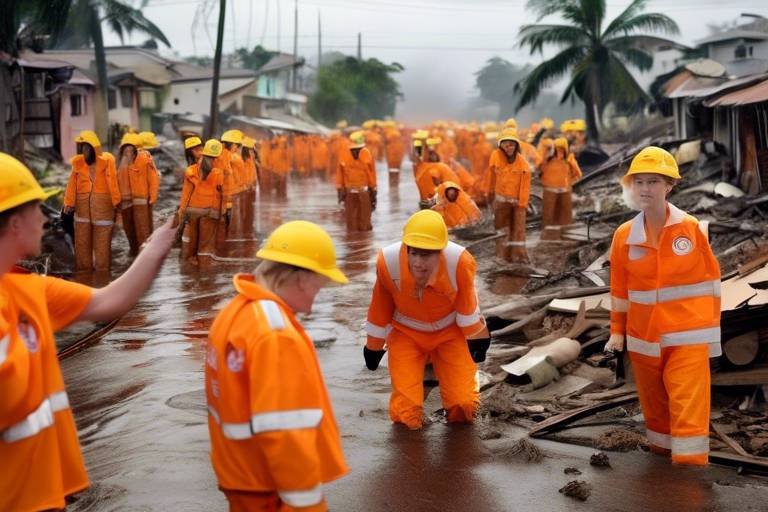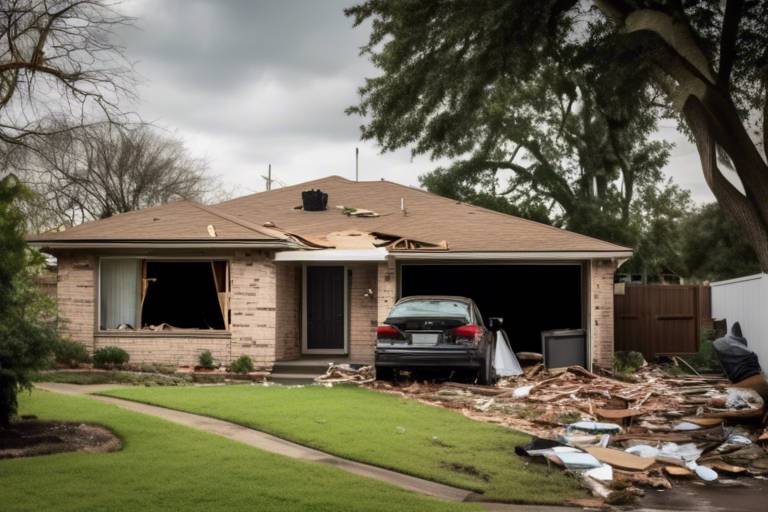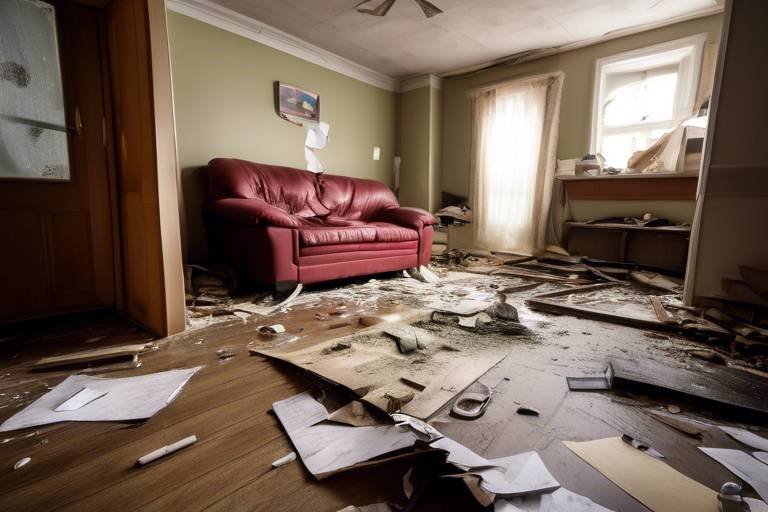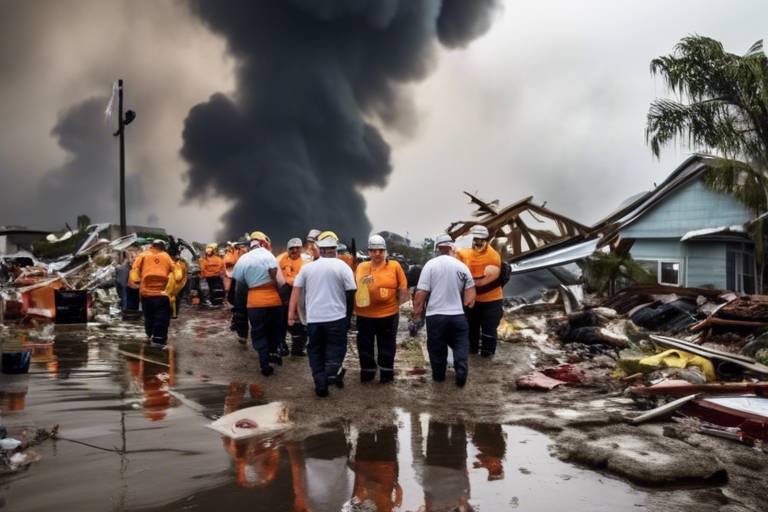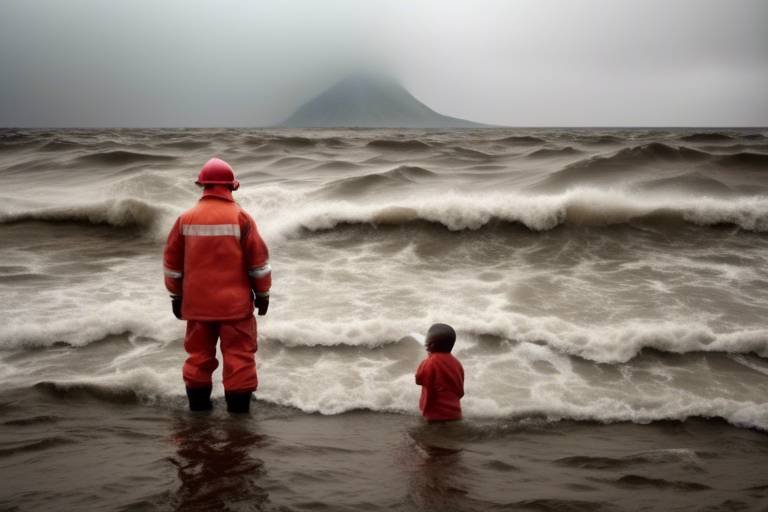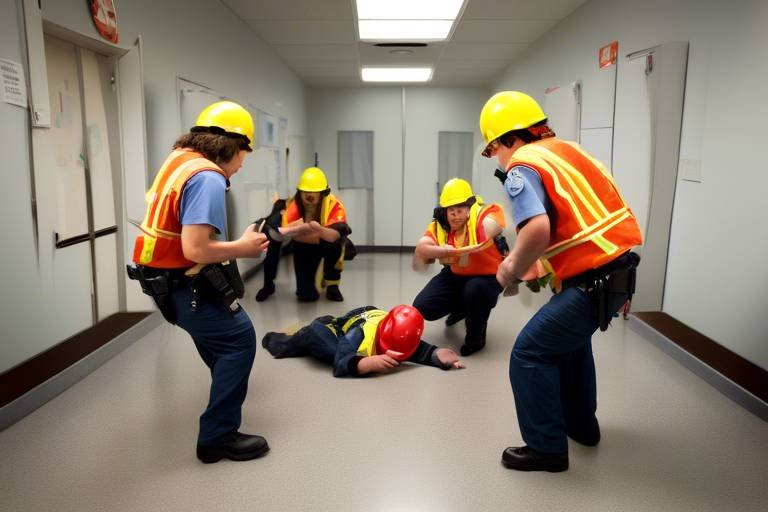How to Initiate an Emergency Response?
When a crisis strikes, the clock is ticking, and every second counts. Knowing how to effectively initiate an emergency response can mean the difference between chaos and control. But what does it really take to kick off a response that not only addresses the immediate danger but also ensures the safety of everyone involved? This article aims to guide you through the essential steps and strategies needed to respond effectively during critical situations.
Before diving into the action, it’s crucial to have a clear understanding of what an emergency response entails. At its core, an emergency response is a coordinated effort to manage and mitigate the impact of an unexpected event that poses a threat to life, property, or the environment. This could range from natural disasters like hurricanes and earthquakes to man-made crises such as industrial accidents or terrorist attacks.
The importance of a well-structured emergency response system cannot be overstated. It involves several key components, including:
- Preparedness: Planning and training for potential emergencies.
- Response: Immediate actions taken during an emergency.
- Recovery: Steps to return to normalcy post-crisis.
- Mitigation: Efforts to reduce the impact of future emergencies.
Each of these components works in tandem to create a robust framework that can adapt to various situations, ultimately ensuring that the response is effective and timely.
The first step in any emergency response is to assess the situation. This involves evaluating the severity and nature of the emergency to determine the appropriate actions. Ask yourself: What is happening? Who is affected? What resources are available? This initial assessment is like taking a snapshot of the crisis, allowing responders to make informed decisions quickly.
In the heat of the moment, recognizing potential risks and hazards is vital. Different emergencies present different challenges, and understanding these can help prioritize response efforts. For example:
- Natural Disasters: Floods, earthquakes, and wildfires can create immediate threats to life and property.
- Health Emergencies: Outbreaks of disease require swift action to contain the spread.
- Technological Hazards: Chemical spills or power outages need specialized responses.
By identifying these risks early on, responders can allocate resources more effectively and mitigate the impact of the emergency.
Understanding environmental conditions can significantly influence emergency response. Factors such as weather, geography, and the time of day can all affect decision-making. For instance, a storm might impede evacuation efforts, while the geography of a region could complicate access to affected areas. Being aware of these conditions allows responders to adapt their strategies accordingly.
Human behavior plays a critical role in shaping the dynamics of an emergency response. Panic can spread like wildfire, and communication breakdowns can lead to chaos. Therefore, it’s essential to consider human factors such as:
- Communication: Clear messages can help reduce anxiety and misinformation.
- Team Dynamics: Ensuring that everyone knows their roles can streamline the response.
- Panic Management: Training responders to handle panic situations can save lives.
By planning for these human elements, responders can create a more effective and calm environment during crises.
Effective communication is the backbone of a successful emergency response. Establishing clear lines of communication among responders and affected individuals is crucial. This involves using multiple channels—such as radios, mobile phones, and social media—to disseminate information quickly and accurately. Remember, in an emergency, clarity is key. Confusion can lead to mistakes, and mistakes can be costly.
Once the situation is assessed and communication channels are established, the next step is to mobilize the right resources swiftly. This means identifying and deploying necessary personnel, equipment, and supplies. Think of it like assembling a puzzle; you need all the right pieces in place to see the full picture. Resources can include:
- Personnel: Trained responders, medical staff, and volunteers.
- Equipment: Emergency vehicles, first aid kits, and communication devices.
- Supplies: Food, water, and shelter materials for affected individuals.
Having a well-prepared inventory and a clear understanding of how to deploy resources can save lives and make a significant difference in the response effort.
Regular training ensures that responders are ready for emergencies. Conducting preparedness drills and continuous education is essential for all involved. Imagine a fire drill at school; it prepares students for a real emergency, helping them react calmly and efficiently. Similarly, training for emergency responders can enhance their skills and confidence, ensuring they are ready to tackle any situation that arises.
Engaging the community plays a crucial role in emergency response. Involving local organizations and citizens in planning and executing effective strategies not only fosters a sense of ownership but also enhances the overall response capability. Community members can provide valuable insights and resources, making the response more comprehensive and effective.
Q1: What is the first step in an emergency response?
A1: The first step is to assess the situation to understand the severity and nature of the emergency.
Q2: Why is communication important during emergencies?
A2: Clear communication helps reduce confusion, panic, and misinformation, ensuring a more coordinated response.
Q3: How can the community help in emergency responses?
A3: Community involvement can provide additional resources, insights, and support, enhancing the overall effectiveness of the response.

Understanding Emergency Response
This article outlines essential steps and strategies for effectively initiating an emergency response, ensuring safety, communication, and coordination during critical situations.
When we talk about emergency response, we're diving into a realm that can mean the difference between chaos and order in critical situations. But what exactly is an emergency response? At its core, it refers to the organized approach to addressing and managing the aftermath of a crisis, aiming to minimize harm and restore normalcy as swiftly as possible. Think of it as a well-oiled machine, where each part plays a vital role in ensuring everything runs smoothly during a storm.
The importance of having a robust emergency response system cannot be overstated. Emergencies can strike at any moment—be it a natural disaster, a medical crisis, or a security threat. Having a clear plan in place means that individuals and organizations can act quickly and efficiently when every second counts. Imagine being in a crowded theater when a fire breaks out; the difference between safety and danger often hinges on how well-prepared the people inside are to respond.
Key components of an effective emergency response include:
- Preparedness: This involves training and equipping individuals to handle emergencies. Regular drills and simulations can make all the difference.
- Communication: Establishing clear channels of communication ensures that everyone knows their role and can coordinate effectively.
- Resource Management: Knowing what resources are available and how to deploy them quickly can save lives.
- Evaluation: After an emergency, assessing the response's effectiveness helps improve future strategies.
In summary, understanding emergency response is about recognizing the importance of being prepared and having a structured approach to crises. It’s not just about reacting; it’s about being proactive and ensuring that when the unexpected happens, we are ready to tackle it head-on.
Evaluating the emergency situation is the first step in response. This section discusses how to quickly assess the severity and nature of the emergency to determine appropriate actions.
Recognizing potential risks and hazards is vital. This subsection delves into common risks associated with various emergencies and how to prioritize them for response efforts.
Understanding environmental conditions can influence emergency response. This part examines how weather, geography, and other factors affect decision-making during an emergency.
Human behavior significantly impacts emergency response. This section discusses how to consider human factors such as panic, communication, and team dynamics in planning responses.
Effective communication is essential for successful emergency response. This section covers strategies for establishing clear lines of communication among responders and affected individuals.
Mobilizing the right resources quickly can save lives. This section discusses how to identify and deploy necessary personnel, equipment, and supplies during an emergency.
Regular training ensures readiness for emergencies. This subsection emphasizes the importance of preparedness drills and continuous education for all responders involved.
Engaging the community plays a crucial role in emergency response. This section explores ways to involve local organizations and citizens in planning and executing effective emergency strategies.
Q: What is the first step in initiating an emergency response?
A: The first step is to assess the situation to understand the severity and nature of the emergency.
Q: Why is communication important during an emergency?
A: Effective communication ensures that everyone involved knows their roles and can coordinate actions effectively, which is crucial for a successful response.
Q: How can communities prepare for emergencies?
A: Communities can prepare by conducting regular drills, engaging local organizations, and educating citizens about emergency procedures.

Assessment of the Situation
When an emergency strikes, the very first step in ensuring a successful response is to assess the situation effectively. Imagine being in a chaotic environment where every second counts; your ability to quickly evaluate the circumstances can mean the difference between life and death. In this critical moment, you need to gather as much information as possible to understand the nature and severity of the emergency. This involves not only looking at what has happened but also considering how it might evolve.
Start by asking yourself a few key questions: What type of emergency is occurring? Are there any immediate dangers to yourself or others? How many people are affected? By answering these questions, you can begin to form a clearer picture of the situation. It's like piecing together a puzzle; each piece of information helps create a complete image that guides your next steps.
To streamline the assessment process, it can be helpful to use a structured approach. Here’s a simple framework to follow:
- Identify the Emergency: Determine whether it's a medical emergency, natural disaster, fire, or another type of crisis.
- Evaluate the Severity: Assess how serious the situation is and prioritize actions accordingly.
- Consider Immediate Risks: Look for hazards such as fire, gas leaks, or structural damage that could pose threats to safety.
Once you have a grasp on the situation, it’s essential to document your findings. This not only helps in coordinating a response but also serves as a record for any follow-up actions that may be necessary. Think of it as creating a map; the clearer your map, the easier it is for others to navigate the response efforts.
Recognizing potential risks and hazards is a vital component of assessing an emergency situation. When you identify risks, you can prioritize them for response efforts. Some common risks associated with various emergencies include:
- Fire Hazards: In situations involving fire, smoke inhalation and burns are immediate concerns.
- Medical Emergencies: Injuries, heart attacks, or other health crises require quick medical attention.
- Environmental Threats: Natural disasters like floods or earthquakes can lead to unstable structures and hazardous conditions.
By understanding these risks, responders can allocate resources and personnel more effectively. For example, if a flood is imminent, the priority should be on evacuating individuals from low-lying areas and ensuring that medical teams are ready to assist those who may be injured or in distress.
Environmental conditions play a significant role in emergency response. Factors such as weather, geography, and time of day can dramatically influence decision-making. For instance, a sudden storm can complicate evacuation efforts or hinder access to affected areas. Similarly, understanding the geography of the location can help responders navigate more efficiently. A well-prepared team will always take these factors into account when planning their actions.
Human behavior is another critical element that can impact emergency response. Panic can spread like wildfire in a crisis, clouding judgment and leading to poor decisions. It’s essential to consider how individuals might react under stress. For example, some people may freeze, while others may rush to help without thinking things through. Understanding these dynamics can help you prepare better communication strategies and ensure that everyone involved knows their roles and responsibilities.
In conclusion, assessing the situation is not just about gathering data; it’s about understanding the broader context and preparing for the unexpected. By taking a systematic approach, identifying risks, and considering both environmental and human factors, you can lay the groundwork for a successful emergency response.
Q: What should be the first action in an emergency?
A: The first action should be to assess the situation and identify any immediate dangers to yourself and others.
Q: How can I prepare for emergencies in advance?
A: Regular training, drills, and having an emergency kit ready can significantly enhance preparedness.
Q: Why is communication important during an emergency?
A: Effective communication ensures that everyone involved understands their roles and can coordinate actions efficiently.

Identifying Risks
When it comes to emergency response, is not just a checkbox on a to-do list; it's the foundation of a successful strategy. Think of it as the compass guiding you through a stormy sea. Without a clear understanding of the potential hazards lurking in the shadows, your response may falter at the most critical moments. So, how do we pinpoint these risks effectively? Let’s explore some key aspects.
First and foremost, it’s essential to recognize the types of emergencies that could arise in your environment. Is your area prone to natural disasters like floods, earthquakes, or wildfires? Or perhaps industrial accidents are more common? Each scenario presents unique challenges and risks that must be addressed. For instance, a flood might require swift evacuation protocols, while a chemical spill might necessitate containment measures.
In addition to the type of emergency, consider the specific risks associated with each situation. Here are some common risks that often need to be prioritized:
- Health Risks: Exposure to hazardous materials or contaminated water can lead to severe health issues.
- Physical Hazards: Debris, fires, and unstable structures can pose immediate dangers to responders and victims alike.
- Psychological Impact: The stress and trauma experienced by individuals during emergencies can affect their decision-making and behavior.
It’s also crucial to evaluate environmental factors that can exacerbate risks. For instance, during a wildfire, high winds can rapidly spread flames, while heavy rain can lead to flash floods. Understanding these dynamics allows responders to adapt their strategies accordingly. Similarly, human factors play a significant role in risk identification. Panic can lead to chaotic situations, making it vital to anticipate how people might react under stress.
To effectively identify and prioritize risks, conducting a thorough risk assessment is invaluable. This involves gathering data about past emergencies, analyzing current conditions, and consulting with experts. Creating a risk matrix can also be beneficial. This table can help visualize the likelihood and impact of various risks, allowing you to focus your resources where they are needed most. Here’s a simple example:
| Risk | Likelihood (1-5) | Impact (1-5) | Total Score |
|---|---|---|---|
| Flood | 4 | 5 | 20 |
| Fire | 3 | 4 | 12 |
| Chemical Spill | 2 | 5 | 10 |
In conclusion, identifying risks is a multifaceted process that requires a keen understanding of your environment, potential hazards, and human behavior. By taking a proactive approach and employing strategies like risk assessments and community engagement, you can significantly enhance your emergency response efforts. Think of it as laying the groundwork for a sturdy building; without a solid foundation, everything else is at risk of collapsing.
Q: What should I do first when identifying risks?
A: Start by assessing your environment and the types of emergencies that are most likely to occur. Gathering data on past incidents can provide valuable insights.
Q: How do I involve the community in risk identification?
A: Engage community members through workshops, surveys, and discussions to gather their perspectives and experiences related to local risks.
Q: Is a risk matrix necessary?
A: While it's not mandatory, a risk matrix can help visualize and prioritize risks effectively, making it easier to allocate resources during an emergency.

Environmental Factors
When it comes to emergency response, understanding is crucial. These factors can dramatically influence the effectiveness of your response efforts. For instance, consider a wildfire in a remote area. The weather conditions—like wind speed, humidity, and temperature—can change rapidly, affecting how quickly a fire spreads and how responders can tackle it. Similarly, geographical features such as mountains, rivers, and urban development can either hinder or facilitate access to affected areas.
Moreover, environmental factors encompass not just the immediate weather conditions but also the seasonal variations that can impact emergencies. For example, heavy rain during a hurricane can lead to flooding, while winter storms can create hazardous driving conditions. It's essential to keep an eye on forecasts and historical data to prepare for these scenarios. Responders should always ask themselves: How does our environment shape the risks we face? Understanding these dynamics can mean the difference between a successful response and a chaotic situation.
Additionally, local ecosystems can play a significant role in emergency scenarios. In areas prone to natural disasters, such as earthquakes or floods, knowing the local wildlife and vegetation can help responders plan effectively. For example, certain plants might be more likely to catch fire, while others can provide natural barriers. This knowledge allows for better strategic planning. It’s like playing a game of chess; understanding the board and the pieces can lead to a winning strategy.
In summary, environmental factors are not just background noise; they are integral to shaping emergency responses. By taking the time to analyze and understand these elements, responders can enhance their preparedness and effectiveness. A well-prepared team that considers these factors can make informed decisions, ensuring that they respond swiftly and efficiently to emergencies.
- What are environmental factors in emergency response?
Environmental factors refer to elements like weather conditions, geographical features, and local ecosystems that can influence how an emergency is managed. - How do weather conditions affect emergency responses?
Weather conditions such as wind speed, humidity, and temperature can impact the spread of disasters like wildfires and influence the safety of responders. - Why is understanding local ecosystems important?
Knowledge of local ecosystems helps responders plan effectively by identifying risks associated with local wildlife and vegetation that could impact emergency strategies.

Human Factors
When it comes to emergency response, understanding is paramount. This isn't just about the physical aspects of a situation; it's about how people react, communicate, and work together under pressure. Imagine a chaotic scene: sirens blaring, people shouting, and confusion reigning. In such moments, human behavior can either make or break the response efforts. It's crucial to consider how individuals might react differently based on their personalities, experiences, and the stress of the situation.
One of the key elements to consider is panic. When faced with an emergency, many people instinctively react with fear. This can lead to hasty decisions that may worsen the situation. For example, during a fire evacuation, individuals might rush towards the nearest exit without considering if it's safe. This is where effective leadership and clear communication become vital. Responders must be trained not only to manage the emergency but also to reassure and guide affected individuals, helping them remain calm and focused.
Moreover, communication plays a critical role in managing human factors. It’s not just about relaying information; it's about ensuring that the message is understood. In an emergency, the clarity of communication can mean the difference between life and death. Responders should establish clear lines of communication before an emergency occurs. This includes using simple language, confirming understanding, and utilizing multiple channels—like radios, text messages, and even social media—to reach as many people as possible.
Team dynamics also significantly impact the effectiveness of an emergency response. The way team members interact can influence their performance. If a team is well-coordinated, they can respond more efficiently. However, if there’s tension or miscommunication, it can lead to mistakes. It's essential for responders to engage in regular training exercises that not only focus on technical skills but also on building trust and improving teamwork. This way, when an emergency strikes, they can operate like a well-oiled machine, each member knowing their role and how to support one another.
Finally, it's important to remember that every emergency situation is unique, and the human response will vary. Therefore, incorporating psychological preparedness into training can be a game-changer. This involves educating responders about the potential psychological impacts of emergencies—not just on themselves but also on the people they are helping. By being aware of these factors, they can better support those in distress and create a more effective response overall.
- What are human factors in emergency response? Human factors refer to the psychological and social dynamics that influence how individuals and teams respond during emergencies, including communication, panic, and teamwork.
- Why is communication important during an emergency? Clear communication helps ensure that everyone understands their roles, reduces panic, and facilitates a coordinated response, ultimately saving lives.
- How can training improve human factors in emergencies? Regular training helps responders develop skills in communication, teamwork, and stress management, making them more effective during real emergencies.

Establishing Communication
When it comes to emergency response, effective communication is the backbone of any successful operation. Imagine being in a chaotic situation, where every second counts and the stakes are incredibly high. In such moments, how do you ensure that everyone is on the same page? The answer lies in establishing clear lines of communication among all parties involved. This includes not only the emergency responders but also the affected individuals and any other stakeholders who may play a role in the response.
First and foremost, it’s essential to set up a communication hierarchy. This means identifying who will be in charge of communication and who will relay information to whom. Having a designated spokesperson can help streamline information flow, making it easier to manage the situation. For example, during a natural disaster, the incident commander can serve as the primary contact for updates and instructions, ensuring that everyone receives accurate information without confusion.
Next, utilizing multiple communication channels is crucial. Relying solely on one method, such as a radio or a phone, can lead to significant delays or failures in communication. Consider the following channels:
- Two-way radios: Ideal for immediate and direct communication among responders.
- Mobile phones: Useful for broader communication, especially if responders are spread out.
- Social media: Can be leveraged to disseminate information quickly to the public.
- Text messaging: A reliable option when voice calls may not go through due to network congestion.
Moreover, it's vital to establish a standard operating procedure (SOP) for communication during emergencies. This SOP should include protocols for how information is shared, how often updates are provided, and what information needs to be communicated. Training all team members on these procedures ensures everyone knows their role and the expected communication flow during an emergency.
Additionally, active listening cannot be overlooked. During emergencies, it’s common for emotions to run high, and people may be anxious or panicking. Responders must practice active listening to fully understand the concerns and needs of those affected. This not only helps in gathering vital information but also fosters trust and reassurance among the community.
Lastly, after the immediate crisis has passed, it’s essential to conduct a communication debriefing. This involves gathering all responders to discuss what worked well and what didn’t in terms of communication. By analyzing the effectiveness of the communication strategies employed, teams can identify areas for improvement and ensure that they are better prepared for future emergencies.
In conclusion, establishing robust communication strategies is a fundamental component of emergency response. By implementing a clear hierarchy, utilizing diverse channels, and fostering an environment of active listening, responders can significantly enhance their effectiveness during critical situations. Remember, in the chaos of an emergency, clear communication can be the difference between confusion and coordinated action.
- What should be the first step in establishing communication during an emergency?
Identify a communication leader and establish a hierarchy. - Why is it important to use multiple communication channels?
To ensure that information is disseminated quickly and reliably, especially under challenging conditions. - How can we improve communication after an emergency?
Conduct a debriefing to evaluate the effectiveness of communication strategies and identify areas for improvement.

Mobilizing Resources
When an emergency strikes, the clock is ticking, and the need for swift action becomes paramount. Mobilizing the right resources quickly can be the difference between chaos and effective management. Imagine a fire breaking out in a high-rise building; every second counts, and the right personnel, equipment, and supplies must be deployed without delay. To achieve this, it’s essential to have a clear plan in place that outlines how resources will be mobilized during a crisis.
First and foremost, it's crucial to identify the resources that will be necessary during an emergency. This includes not only personnel but also equipment and supplies. For instance, in the case of a natural disaster, you might need:
- Medical personnel and first responders
- Firefighting equipment
- Rescue tools and machinery
- Communication devices
- Food, water, and shelter supplies
Next, establishing a clear chain of command is vital. This ensures that everyone knows their roles and responsibilities. Think of it like a well-rehearsed play; each actor knows their lines and cues, leading to a seamless performance. In an emergency, this means that the incident commander will direct the operations, while other team members execute their specific tasks. This structure not only streamlines the response but also instills confidence among responders.
Moreover, effective resource mobilization relies heavily on pre-established partnerships with local organizations and agencies. These relationships can be invaluable during a crisis. For example, local hospitals might have emergency protocols in place that allow them to quickly receive patients, while nearby businesses can provide supplies or shelter. Collaborating with these entities ahead of time can significantly enhance the overall response capability.
Another critical aspect is the training and preparedness of the personnel involved. Regular drills and simulations can help responders become familiar with the mobilization process. Imagine a fire drill in a school; students and staff practice evacuating the building, ensuring that everyone knows the quickest routes and assembly points. Similarly, first responders should engage in exercises that mimic real-life scenarios, allowing them to practice mobilizing resources efficiently.
Finally, it’s essential to have a system in place for assessing resource availability and readiness. This can be achieved through a resource management database that tracks equipment, personnel, and supplies. For example, if a flood occurs, responders can quickly check the database to see which boats and rescue teams are available and where they are stationed. This level of preparedness can drastically reduce response times and improve coordination.
In summary, mobilizing resources during an emergency requires careful planning, clear communication, and strong partnerships. By identifying necessary resources, establishing a chain of command, engaging in regular training, and maintaining an up-to-date inventory of available assets, emergency responders can ensure that they are ready to act swiftly and effectively when it matters most.
Q: What is the first step in mobilizing resources during an emergency?
A: The first step is to assess the situation and identify the specific resources needed for the type of emergency at hand.
Q: How can communities prepare for effective resource mobilization?
A: Communities can prepare by establishing partnerships with local organizations, conducting regular training drills, and creating a resource management system.
Q: Why is a chain of command important in emergency response?
A: A chain of command helps clarify roles and responsibilities, ensuring that everyone knows who to report to and what tasks they need to perform.
Q: How can technology assist in resource mobilization?
A: Technology can help by providing real-time data on resource availability, facilitating communication among responders, and enabling efficient coordination during emergencies.

Training and Preparedness
When it comes to emergency response, the phrase "better safe than sorry" couldn't be more accurate. are the cornerstones of an effective response strategy. Imagine being in a high-pressure situation where every second counts; having the right training can mean the difference between chaos and a well-coordinated effort. Therefore, it's crucial for all responders—whether they are professionals or volunteers—to undergo regular training to refine their skills and stay updated on best practices.
Training should encompass a variety of scenarios, enabling responders to handle diverse emergencies with confidence. For example, a firefighter might need to know how to extinguish a blaze, while a paramedic must be adept at providing first aid. Preparedness drills simulate real-life emergencies, allowing teams to practice their response in a controlled environment. This hands-on experience is invaluable, as it helps individuals familiarize themselves with their roles and responsibilities during an actual event.
Moreover, continuous education is equally important. The world of emergency response is always evolving, with new technologies and techniques emerging regularly. Keeping up-to-date with these advancements is essential for ensuring that responders are equipped with the latest knowledge. Regular workshops, online courses, and seminars can serve as excellent platforms for learning and growth. By investing in training programs, organizations not only enhance their team's skill set but also build morale and foster a sense of community among responders.
To illustrate the importance of training and preparedness, consider the following table that outlines key training areas and their benefits:
| Training Area | Benefits |
|---|---|
| First Aid and CPR | Equips responders to provide immediate medical assistance, potentially saving lives. |
| Fire Safety | Teaches techniques for preventing and extinguishing fires, reducing property damage. |
| Communication Skills | Enhances coordination among team members and improves information dissemination. |
| Disaster Response | Prepares responders for large-scale emergencies, ensuring a well-organized approach. |
In addition to formal training, community involvement is a vital aspect of preparedness. Engaging local organizations and citizens in training initiatives not only broadens the skill set available but also fosters a sense of responsibility and readiness within the community. When citizens are trained in basic emergency response techniques, it creates a network of support that can be invaluable during a crisis.
In summary, training and preparedness are not just checkboxes to tick off; they are ongoing commitments that require dedication and resources. By prioritizing these elements, organizations can ensure that their responders are not only ready to act but are also confident in their ability to make a difference when it matters most. After all, in the world of emergency response, being prepared is the key to success.
- What types of training should responders undergo?
Responders should undergo training in first aid, fire safety, disaster response, and communication skills.
- How often should training sessions be conducted?
Regular training sessions should be held at least once a year, with refresher courses as needed.
- Can community members participate in training?
Absolutely! Community involvement is encouraged to create a well-prepared network of support.

Community Involvement
Engaging the community is not just a nice-to-have; it’s a critical component of effective emergency response. When disaster strikes, the first responders may not always be able to reach every affected area immediately. This is where the power of community involvement shines. By fostering a culture of preparedness and collaboration among local citizens and organizations, we can create a network of support that enhances our overall response capabilities.
Imagine a neighborhood where everyone knows their role during an emergency. Residents are trained in basic first aid, local businesses have emergency plans in place, and community centers serve as hubs for information and resources. This level of preparedness not only saves lives but also promotes a sense of security and unity within the community. Here are some key ways to involve the community in emergency response planning:
- Education and Training: Regular workshops and training sessions can equip community members with the skills they need to respond effectively. Topics can include first aid, CPR, and basic firefighting techniques.
- Establishing Local Networks: Creating local emergency response teams can help streamline communication and resource sharing during crises. These teams can include volunteers from various sectors, such as healthcare, education, and local government.
- Public Awareness Campaigns: Informing residents about potential risks and how to prepare for them can significantly enhance community resilience. Campaigns can utilize social media, flyers, and community meetings to spread the word.
Moreover, community involvement fosters trust between residents and emergency services. When citizens feel informed and included in the planning process, they are more likely to cooperate during an emergency. This trust can lead to quicker reporting of incidents, greater adherence to safety protocols, and a more coordinated response overall.
To illustrate the importance of community involvement, consider the following table that highlights successful case studies:
| Community | Emergency Type | Outcome |
|---|---|---|
| Springfield | Flood | Rapid mobilization of local volunteers saved lives and property. |
| Greenwood | Wildfire | Community drills led to efficient evacuation and minimized loss. |
| Lakeside | Earthquake | Preparedness training resulted in a 50% increase in survival rates. |
In conclusion, community involvement is not merely an accessory to emergency response; it is a foundational element that can make all the difference. By investing time and resources into building a prepared community, we can enhance our collective ability to respond to emergencies effectively. Remember, in times of crisis, it’s not just about having the right tools—it’s about having the right people, ready and willing to step up and help.
Q: How can I get involved in my community's emergency response plan?
A: Start by attending local meetings, volunteering for training sessions, and connecting with your neighborhood's emergency response team.
Q: What should I include in my emergency preparedness kit?
A: Essential items include water, non-perishable food, a flashlight, batteries, a first aid kit, and important documents.
Q: How can I spread awareness about emergency preparedness?
A: Use social media, organize community events, and collaborate with local organizations to disseminate information on emergency preparedness.
Frequently Asked Questions
- What is an emergency response?
An emergency response refers to the organized approach taken to manage and mitigate the effects of an unexpected situation that poses a threat to life, health, property, or the environment. It includes various actions such as assessing the situation, mobilizing resources, and communicating effectively with all parties involved.
- How do I assess an emergency situation quickly?
To assess an emergency situation quickly, start by gathering all relevant information about the incident. Look for signs of danger, evaluate the severity, and identify the immediate risks. This process might involve asking questions like, "What happened?", "Who is affected?", and "What resources are needed?"
- Why is communication important in emergencies?
Communication is crucial during emergencies because it ensures that everyone involved is informed and coordinated. Clear communication helps reduce panic, facilitates the efficient allocation of resources, and ensures that the right information reaches those who need it most, ultimately saving lives.
- What resources should be mobilized during an emergency?
The resources to mobilize during an emergency depend on the nature of the incident. Generally, this includes personnel such as first responders, medical teams, and volunteers, as well as equipment like ambulances, fire trucks, and emergency supplies. Knowing what to deploy quickly can make a significant difference in the outcome.
- How can training improve emergency preparedness?
Regular training enhances emergency preparedness by ensuring that responders are familiar with protocols, equipment, and teamwork. Drills and simulations help individuals practice their roles in a low-pressure environment, making them more effective and confident when real emergencies occur.
- What role does community involvement play in emergency response?
Community involvement is vital in emergency response as it fosters collaboration between local organizations, citizens, and responders. Engaging the community allows for better planning, resource sharing, and ensures that everyone understands their role during an emergency, creating a stronger and more resilient response network.






